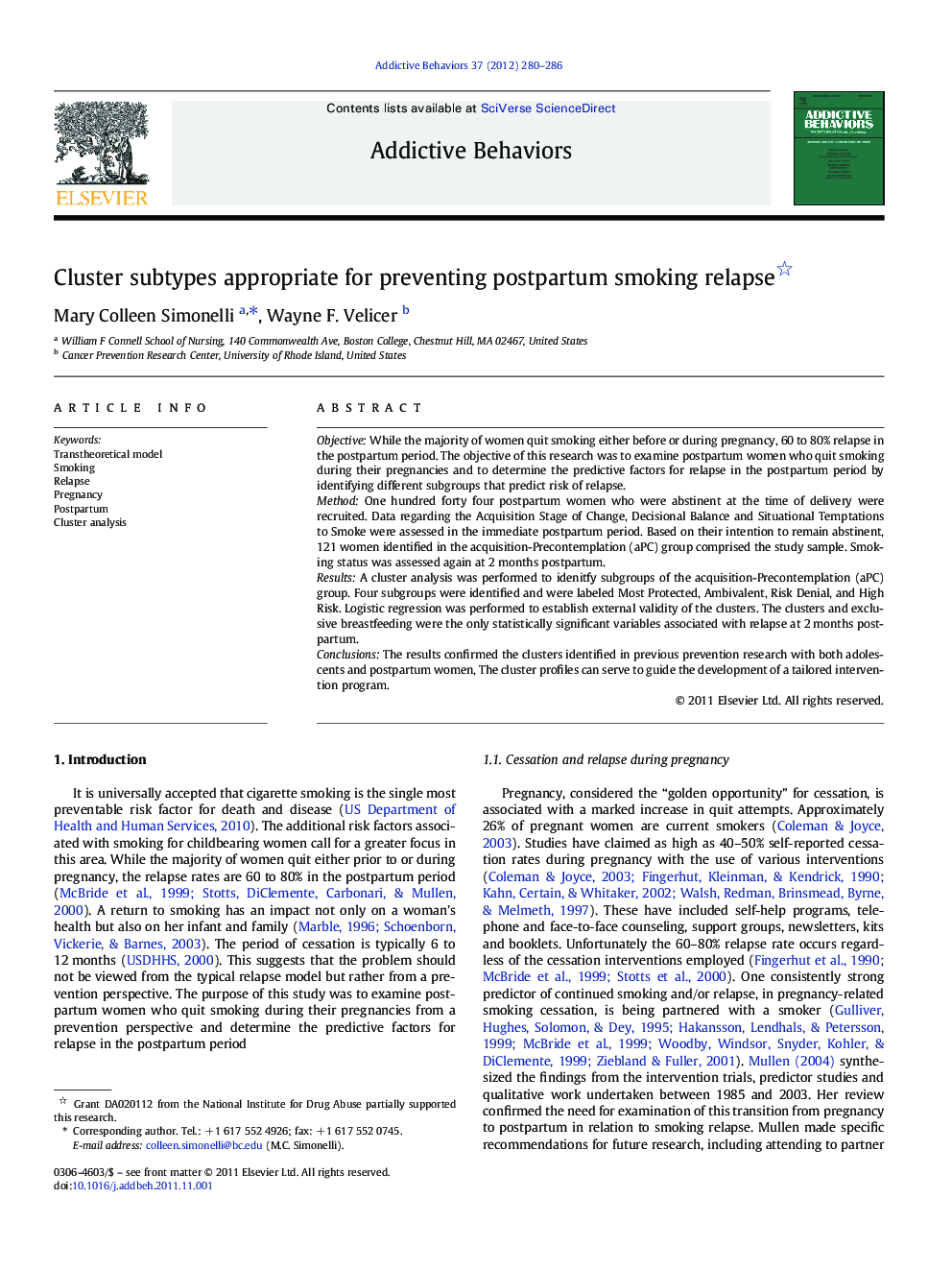| کد مقاله | کد نشریه | سال انتشار | مقاله انگلیسی | نسخه تمام متن |
|---|---|---|---|---|
| 899276 | 915370 | 2012 | 7 صفحه PDF | دانلود رایگان |

ObjectiveWhile the majority of women quit smoking either before or during pregnancy, 60 to 80% relapse in the postpartum period. The objective of this research was to examine postpartum women who quit smoking during their pregnancies and to determine the predictive factors for relapse in the postpartum period by identifying different subgroups that predict risk of relapse.MethodOne hundred forty four postpartum women who were abstinent at the time of delivery were recruited. Data regarding the Acquisition Stage of Change, Decisional Balance and Situational Temptations to Smoke were assessed in the immediate postpartum period. Based on their intention to remain abstinent, 121 women identified in the acquisition-Precontemplation (aPC) group comprised the study sample. Smoking status was assessed again at 2 months postpartum.ResultsA cluster analysis was performed to idenitfy subgroups of the acquisition-Precontemplation (aPC) group. Four subgroups were identified and were labeled Most Protected, Ambivalent, Risk Denial, and High Risk. Logistic regression was performed to establish external validity of the clusters. The clusters and exclusive breastfeeding were the only statistically significant variables associated with relapse at 2 months postpartum.ConclusionsThe results confirmed the clusters identified in previous prevention research with both adolescents and postpartum women, The cluster profiles can serve to guide the development of a tailored intervention program.
► Examination of relapse risk postpartum for women who quit smoking for pregnancy.
► A cluster analysis found four subgroups.
► Clusters and exclusive breast feeding were only significant predictors of relapse.
► The clusters were labeled Most Protected, Ambivalent, Risk Denial, and High Risk.
► The results confirmed the clusters previously identified in prevention research..
Journal: Addictive Behaviors - Volume 37, Issue 3, March 2012, Pages 280–286